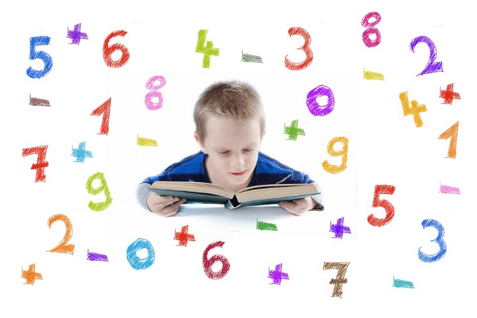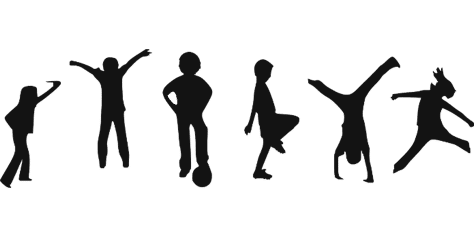The theory of Multiple Intelligences was developed by Howard Gardner of Harvard University in his 1983 book Framers of Mind: The Theory of Multiple Intelligences. It redefines intelligence as consisting of different “modalities” rather than one single general ability measured by aptitude tests and SAT scores. Indeed, Gardner argues that intelligence tests such as SAT/ACT/GMAT are limited to logic, math and linguistics and may miss other forms of intelligence. After satisfying a carefully constructed set of criteria for each, Gardner identified 8 “intelligences”.
Spatial - Visual Logical - Mathematical Interpersonal Musical – Rhythmic
Bodily – Kinesthetic Linguistic – Verbal Intrapersonal Naturalistic
Spatial – Visual
This type of learner thinks more in pictures than in words and has a very good ability to comprehend multi-dimensional images and shapes. They are very good at remembering images and faces. Art and Creative Expression in the Toddler room and Art in the Preschool/PreK Rooms at ScuttleBugs allow these types of learners to thrive. When children grow to adulthood, navigating using a GPS system or a compass would be good examples of this type of intelligence in action.


Logical-Mathematical
This type of learner displays a complex form of intelligence that favours logical thinking and reasoning over imprecise subjective assumptions in order to reach conclusions. Getting started early, the Math and Science components of the curriculum at ScuttleBugs exposes children to the world of Science and Math. Later in life, Lawyers, Engineers and Scientists are just a few of the professions in which this type of intelligence would thrive.
Interpersonal
This intelligence is rooted in your ability to understand and relate to others and could be thought of as “emotional intelligence.” This learner displays very good verbal and non-verbal communication skills. They are able to identify characteristics in others and to note distinctions between people.


Musical – Rhythmic
Learners with this type of intelligence can easily identify rhythmic and tone patterns and can pick up sounds from musical instruments, humans and the environment. They are very auditory and learn well from lectures. Music and movement are a key part of the curriculum at ScuttleBugs allowing children displaying this form of intelligence to formulate an early love of learning.
Bodily – Kinesthetic
These types of learners have very well- defined gross and fine motor skills and good coordination. Children displaying this form of intelligence will enjoy activities like crawling, rolling, jumping and climbing.


Linguistic -Verbal
Linguistic Learners display a great capacity for words and languages and have a good ability to remember phrases. They enjoy (and excel at) reading, writing and telling stories. Children showing this type of intelligence will really enjoy the circle time that takes place each morning at ScuttleBugs.
Intrapersonal
This intelligence is related to the ability to be introspective and self-reflective in order to thoroughly understand your own strengths and weaknesses and individual characteristics so they can be used effectively and appropriately.


Naturalistic
This was a late addition to Gardner’s intelligences after it was introduced by him in 1995. This type of learner is easily able to recognize flora and fauna and have an intimate understanding of the natural world. They are able to use this ability to excel in biological sciences, zoology, botany and the like.
Gardner was very clear from the beginning that the multiple intelligences were never meant to be a learning style to be tested separately for empirical verification. He was the first to point out that learning styles are lacking in empirical evidence suggesting that one learning style is more effective than another. He concludes his theory with 3 recommendations for educators.
- Avoid confusing the multiple intelligences with learning styles.
- Instead of a “one size fits all” approach, know your students and which “Intelligences” they demonstrate in order to individualize the teaching methods (activities) as much as possible for each one. This is more practical in smaller classes.
- Teach important core material in multiple ways such as with stories, works of art, diagrams, role plays and music. That will allow you to reach students who learn in different ways through the different forms of intelligences.
Conclusion
Gardner’s model has been adopted by many schools and is a very useful guideline to recognize the different ways that children learn and the aptitudes they show. The basic takeaway is that children learn in different ways so the more you know your child and which form of intelligence they demonstrate, the easier it is to stimulate them with appropriate activities and teaching methods. The second takeaway is that variety in the curriculum is very important in order to capture more of the intelligences.
In this short video clip below, Gardner himself outlines what he considers to be the best educational approaches and how his landmark theory originated.
Finally, there is a very simple way to remember the 8 multiple intelligences so it won’t be necessary to look them up – just think of the word “SLIMBLIND.”
Spatial-Logical-Interpersonal-Musical-Bodily-Linguistic-Intrapersonal-Naturalistic-DONE.
Sources
Gardner Howard (1983), Framers of Mind: The Theory of Multiple Intelligences. Basic Books. ISBN 978-0133306149.
Howard-Jones, Paul (2010), Introducing Neuroeducational Research, Taylor and Francis, ISBN 978 -0415472005.
Howard Gardner: “Multiple Intelligences are not Learning Styles” in The Washington Post: Article by Valerie Strauss October 16, 2013.
